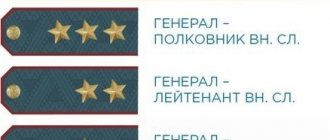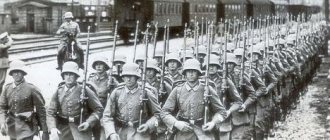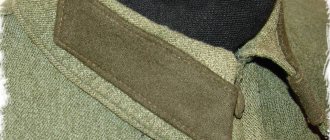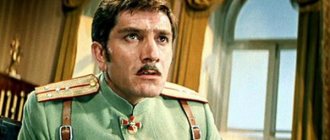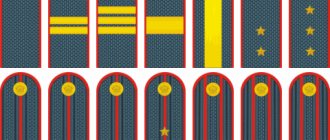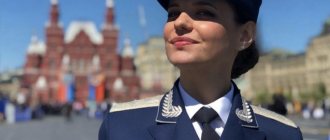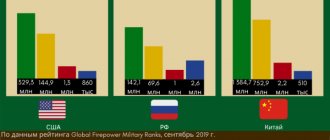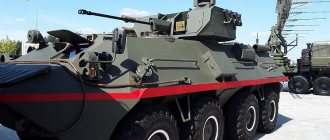As in any structure, there is a certain hierarchy in the Russian army. In this case, the “pyramid” represents military positions and their corresponding army ranks. At the same time, as distinctive signs on the uniform of military personnel, shoulder straps . Today we'll talk about what military ranks are present in the Russian army, what are their main differences, how the stars on the shoulder straps are located and how many years to serve before becoming a colonel.
Types, classification of ranks and types of shoulder straps
Let's start by understanding what types of titles exist in general. After all, every person has seen shoulder straps not only on soldiers’ and sailors’ uniforms, but also on the shoulders of rescuers, police officers and state security officials. In fact, everything is simple and there are only two types of ranks in Russia: naval and military.
It is not difficult to guess that the first ones belong to the military personnel of the Navy (this includes units of the coast guard, armed forces operating on the water and under its surface, as well as all naval military units), and military ranks apply to all other types of law enforcement agencies.
As for the classification of ranks in the Russian army, there are officer and non-officer ranks (no jokes, this is really true, albeit primitive). At the same time, officers, in turn, are divided into junior, senior and senior officers. Naturally, the titles are distributed in exactly the same order.
With shoulder straps, everything is somewhat more complicated, since their appearance differs according to a whole list of criteria:
- the color of the shoulder strap (depending on the type of troops, as well as on what uniform they are intended for - everyday, field or ceremonial);
- color of stripes (depending on the type of troops);
- rank (each classification of ranks has a specific order of stripes, stars or stripes).
However, in order to quickly understand the army “constellations”, let’s move on to the direct listing of ranks in ascending order, indicating the corresponding position and insignia.
Global reform of the Russian army uniform
The modern history of Russia includes several unsuccessful attempts to change military uniforms. While our country was spending huge amounts of money on unsuccessful experiments, in the US Army, military clothing became more comfortable, its performance characteristics increased, and innovative materials were used in the production of clothing.
The modern military uniform began its journey in 2007, when the post of Minister of Defense was held by Anatoly Serdyukov. It was then that a large-scale sketch competition was organized, in which thousands of designers from all over the country took part. The Ministry of Defense awarded the victory to the famous designer Valentin Yudashkin.
For the next two years, specialists were developing the final versions of a new army uniform, intended for further equipment of the Russian Army. The result was a set of clothing that was in many ways similar to American uniforms. The developers did not agree with this opinion, although many factors spoke in favor of this comparison.
The winter military uniform caused particular dissatisfaction. It did not protect the soldiers from the cold. For this reason, the Ministry of Defense received many complaints every day about the poor quality of the winter kit. This led to an outbreak of colds among the military. There were also complaints about the appearance of the uniform: some stylistic solutions were copied from kits in other countries. The stumbling block was the quality of the fabric and thread: new military clothing quickly became unusable.
Negative reviews and dissatisfaction among soldiers and army specialists forced the Ministry of Defense to think about changing the equipment. The decision to take American clothing as a basis was a mistake; such costumes were not suitable for the conditions of our country. The new set of military uniforms, developed subsequently, consisted of 19 parts. The approximate cost of one set is 35 thousand rubles. The ceremonial version did not suffer any special changes, since the field uniform is of particular importance.
Non-officer ranks
Shoulder straps for everyday uniforms (hereinafter we take them as a sample) of this category of ranks imply the application of two narrow stripes (the color corresponds to the branch of the military) along the edges of the longitudinal part.
The list of military ranks begins with the position of “ private ” (in the naval type the analogue is sailor ), this is the first step in the army career ladder, as well as the starting (often the only) rank for recruits who have joined the banners of the Russian armed forces as conscript soldiers. Depending on the type of troops, a position that implies the rank of private may include an ordinary shooter, a driver, a radio operator, a gun crew number, a reconnaissance officer, and many others. Privates wear shoulder straps without any distinctive insignia.
Corporal ( senior sailor ). This rank can be received by an ordinary soldier or sailor who has distinguished himself during the period of training or combat training. , there are no positions that imply the rank of “ corporal staff employees, command drivers and other “special” soldiers their shoulder straps
Junior sergeant ( sergeant major of the second class ). Privates who have successfully completed a special sergeant training course can count on this title. In addition, the most distinguished privates, corporals or sailors can “attach” 2 connected narrow corners to their shoulder straps . The rank of junior sergeant implies the position of deputy squad commander.
Sergeant ( sergeant major of the first article ). Junior sergeants who have demonstrated themselves most responsibly can count on this rank. By position, the sergeant is the commander of a squad or crew, so the applicant must have leadership skills, as well as find contact with the rank and file and use their authority. Such a soldier, as a rule, leads the formation and manages the work process. On the sergeant's shoulder straps there are 3 narrow corners connected to each other.
Senior sergeant ( chief petty officer ). A soldier of this rank is the deputy platoon commander. Sergeants who best perform their duties and who also know how to find a common language with officers and warrant officers can apply for a wide corner in the middle of the shoulder strap.
Petty Officer ( ship's chief petty officer ). The so-called soldier's ceiling. In other words, this is the highest rank to which a conscript soldier can reach. By position, the owner of shoulder straps with interconnected corners (wide and narrow) can be a platoon commander or, in rare cases, a company sergeant major.
Ensign ( midshipman ). Holders of this rank form the so-called stratum between soldiers and officers. To put on shoulder straps with two small stars (13 mm), located in a row along the longitudinal side, and manage a vegetable warehouse, you must enter into a contract with the armed forces. In addition, the candidate should take courses at a special school for warrant officers. Of course, the position is not limited to the head of the warehouse - the “ghost” officer (this rank does not require a higher military education, however, most warrant officers do not even think about it) can also be appointed as a company sergeant major.
Senior warrant officer ( senior midshipman ). In general, a complete analogy with a simple ensign, with the exception of a slight difference in salary, as well as the addition of a third star on the shoulder straps.
Historical reference
In the Russian Empire, shoulder straps appeared at the end of the 15th century and served exclusively for practical purposes: they kept the belt of a cartridge bag or belt from slipping and protected the uniform from being rubbed by the gun belt. Therefore, they were worn only by soldiers and, often, only on the left shoulder. Sailors of any rank did not have shoulder straps at all, since they did not have guns or cartridge bags.
Around 1762, shoulder straps began to be used to distinguish members of different battalions. At the same time, an attempt was made to start using them to distinguish ranks, however, since there was no single standard, this idea failed.
Alexander I gave the shoulder straps the function of distinction . They were introduced for all military personnel (including officers who previously wore epaulettes that protected their shoulders from the blows of cutting weapons) only in 1855.
Since then, their appearance, color and even shape have undergone changes many times, and after the October Revolution they were completely abolished in the Red Army. However, in many regiments of the White Army, shoulder straps continued to be worn, and, thanks to Soviet propaganda, until the forties of the 20th century, shoulder straps were considered a symbol of counter-revolution and were not held in high esteem.
Despite this prejudiced attitude, at the very beginning of 1943, a decree was signed to assign shoulder straps to all employees of the Red Army, and less than a month later, on February 15, this also affected employees of the Navy.
Since by this time the shoulder straps had no practical value and were firmly associated among the soldiers of the Soviet army with the White Guards, the reaction to this innovation was ambiguous. Both Soviet and fascist newspapers openly ridiculed this idea . But the Soviets were bewildered, not understanding why returning to the old foundations, and the fascists were gloating, considering Stalin’s move to be a manifestation of weakness and fear of the enemy.
In fact, this idea matured already in 1935. By 1941, samples of both uniforms and new shoulder straps were ready. Despite the wartime and negative reaction, the innovations were not rejected or postponed and were even able to inspire the army.
Junior officers
On the shoulder straps of officers of this category there is one central longitudinal strip of a certain color.
This list opens with the rank of junior lieutenant (the naval equivalent is exactly the same title). Previously, this title was awarded to young men who completed their studies at the military department at a civilian institute. Also, one star (13 mm) in the middle is automatically placed on the shoulder strap upon receiving higher military education or after completing officer courses. The position held by a junior lieutenant is not very different from that of a sergeant - commander .
The next rank in order is lieutenant (similar). After graduating from military universities, young lieutenants are assigned to units where they undergo a kind of exam. Its essence is that a newly minted officer is appointed to a position that requires a much higher rank, for example, head of the food service. If a lieutenant successfully passes the test, then in the coming years his rank will quickly rise to the required one. Also, the owner of 2 stars in a horizontal row has every reason to be a platoon commander (in rare cases, being a deputy company commander).
Senior lieutenant (similar to sailors). This rank quickly comes to those lieutenants who do their job best. Starleys are appointed to the position of deputy company commander to perform any functions. The shoulder straps of a senior lieutenant are decorated with 3 stars, forming a triangle between them.
Captain ( captain-lieutenant ). This officer has every right to be appointed as a battalion commander or as a deputy battalion commander. The rank is intermediate between junior and senior officers. The captain's shoulder straps have 4 stars (2 are located horizontally, the remaining 2 are in the vertical row above).
Senior officers
The shoulder straps of military personnel of this category are decorated with 2 central longitudinal stripes.
Major ( captain of the third rank ). This rank precisely implies the position of head of any service, so a responsible lieutenant can make his way through his career relatively quickly. A major can also On the shoulders of such an officer are shoulder straps with one large (20 mm) star in the middle.
Lieutenant Colonel ( captain of the second rank ). Often this rank limits the career of a military man. The reason for this is the following - with the rank of lieutenant colonel there may be one of several deputy regiment commanders. Accordingly, advancement in rank is possible only for one single position, which is no longer vacated as often as those listed above. A lieutenant colonel wears 2 large stars on his shoulder straps, similar to a lieutenant's.
Colonel ( captain of the first rank ). As a rule, an officer of this rank is the commander of a military unit (he also heads the regiment headquarters). In addition, a colonel may hold the position of deputy at division headquarters. On the shoulder straps of such a serviceman there are 3 large stars arranged in a triangle.
